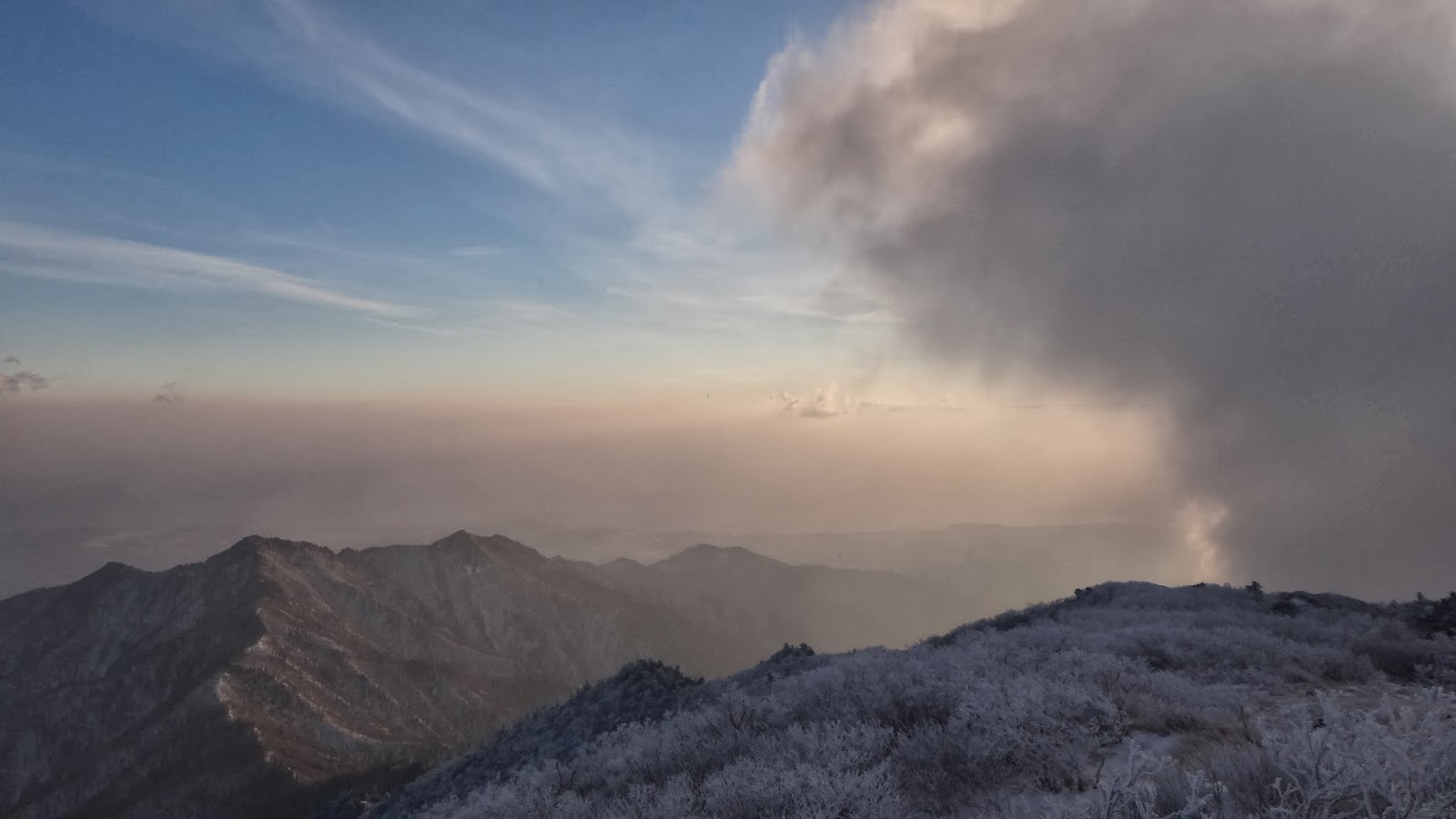Mountain bike adventures and travels on 26er touring MTBs. Come adventure and explore with Brian
Monday, February 17, 2014
Off-grid, handcrafted life on Oregon farm & workshop // Sustainable living // Adventure Living // Designing a low-consumption home with sustainable energy and materials //
Off-grid, handcrafted life on Oregon farm & workshop // Sustainable living // Adventure Living // Designing a low-consumption home with sustainable energy and materials //
Thursday, February 6, 2014
Seoraksan Trekking in South Korea // Winter alternative to the blues // Photo story // Yongpyong Ski // Daecheongbong Ascent 2014 // Inspiration // Microadventure
First, I went skiing at Yongpyeong Resort near Hoenggye, South Korea. The all-season resort offers hiking trails in the summer, a water park for families and ski courses for all ages. Although I am not a ski bum, I found some skis that were being thrown out in my apartment complex, Rossignal Viper S 190cm with Marker bindings alpine design - like new condition - for free with Kastle poles. With Nordica race boots, I had enough equipment for the slopes without spending more than $30 on the ski binding settings and the season pass at $400. Ready, steady, go.
My other interest has been winter trekking and staying overnight inside Seoraksan National Park. Hiking and mountain trekking is probably the best winter past-time activity in Gangwon-do, Korea. My friend Zac is trail running as well, so there are several ways to enjoy the trails. We don't have groomed trails like in the United States, so Fatbikes aren't an option just yet. However, the Winter Olympics 2018 are coming and perhaps more winter sports will take off when it comes bringing more Western culture sports to Korea.
Another wintry day up at 1500 meters above sea level. Location of the 2018 Winter Olympics.
The Green is an intermediate slope and they are building the snowboard course on the left side.
I am not a winter person, hate the long nights and short days of winter. Staying frosty here though and passing the time before going back for the final year of teaching in Korea.
This is the view on the walk into Seoraksan National Park. I usually start at the park administration building and walk 2 kilometers to the official entrance near the Buddhist temples. What starts out as a casual hike into the park entrance past the bronze Buddha at Sinheungsa temple becomes a vigorous trek to the peak.
The flat first 2 km are perfect for in/out of the park. This is a 12-18 hour trek to Daecheongbong Peak located 12 kilometers inside the park at 1708 meters above sea level.
Ancient stones recreated and assembled as long ago.
The views are spectacular. Everyone who visits South Korea in the winter should visit this area.
I met this super friendly professional photographer. His photos were mind-blowing and he completes projects on nature, the environment, and female nudes. All amazing work, thanked him for sharing.
The trail is designed with staircases, bridges, and hard rock paths. Most hikers will wear their ice crampons, which are attached with rubber belts or chain mesh designs, the price ranges from $5-25 for a set.
This is the view about half way into the climb.
I met a college student group, they were awesome in sharing their trek to the Daecheongbong Peak 1708m and we spent the night at the Socheong shelter while EBS (Educational Broadcasting Station) was filming for the their February broadcast of Extreme Jobs. The episode covered Mountain Rescue EMS teams.
This is one of the two peaks, with military satellite reception on top. Winds were really blowing up there.
Here's our group, sorry I don't have all your names written here. This is inside the Socheong shelter (7,000won per night, reservations recommended)
Outside it was cold, the winds picked up to 28 meters/second.
This is the Socheong shelter just 600 meters away from Daecheongbong Peak.
We made it all the way to the top as a team. An awesome day for sure.
EBS filming on location. Their battery packs were losing charge, it was very cold that morning.
Sweet sunrise at the peak!
Epic trails and views from the top. This trek is from the main park entrance at Sokcho-dong.
And I hiked out of the park with this woman, she bought me herbal tea at a mountain shop when we parted ways. It's quite common to meet people on South Korean mountains, share some short conversation (in many cases English is not fluently understood or spoken) and share some tea or dinner at the shelter. Reservations must be made in advance for weekends, even in winter.
If you are interested in more information about Seoraksan National Park, read my earlier blog from 2012/13
Thanks for visiting the Korean-World. - Brian.
---
Adventure, Be positive, Stay Healthy.
and remember to live the life we have been given.
Life today in the present.
Find Inspiration Outside with Nature.
Subscribe to:
Comments (Atom)





























































